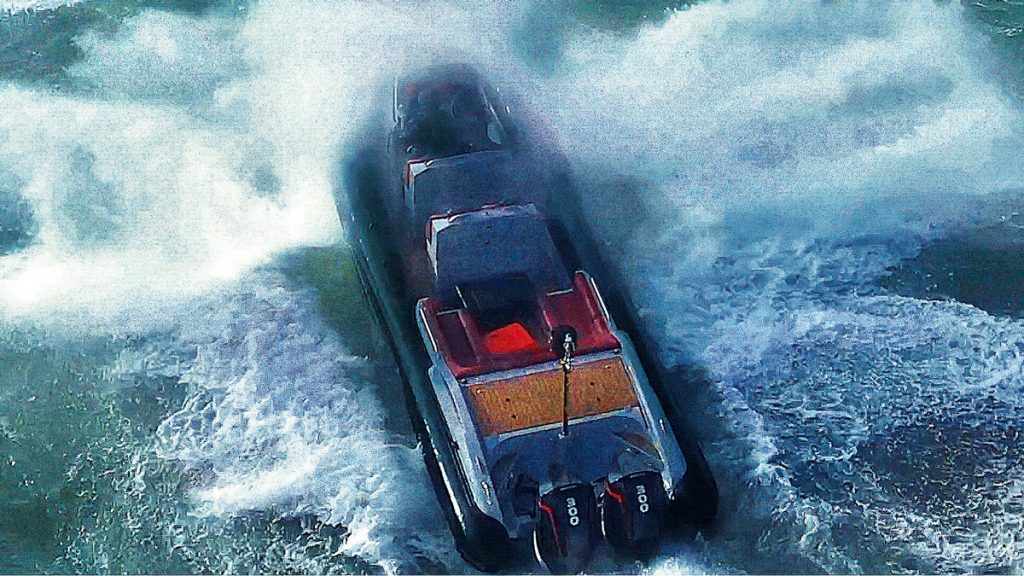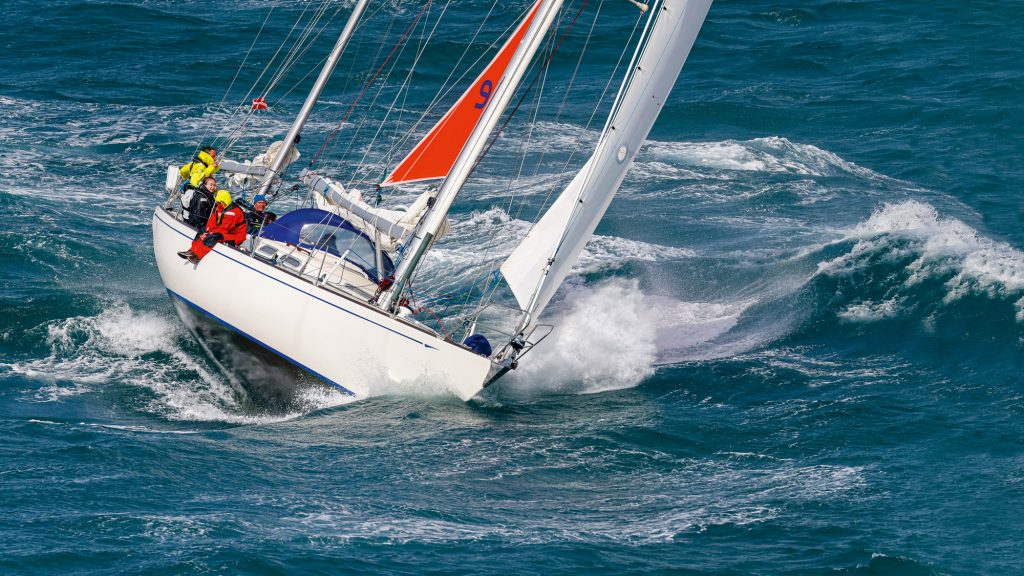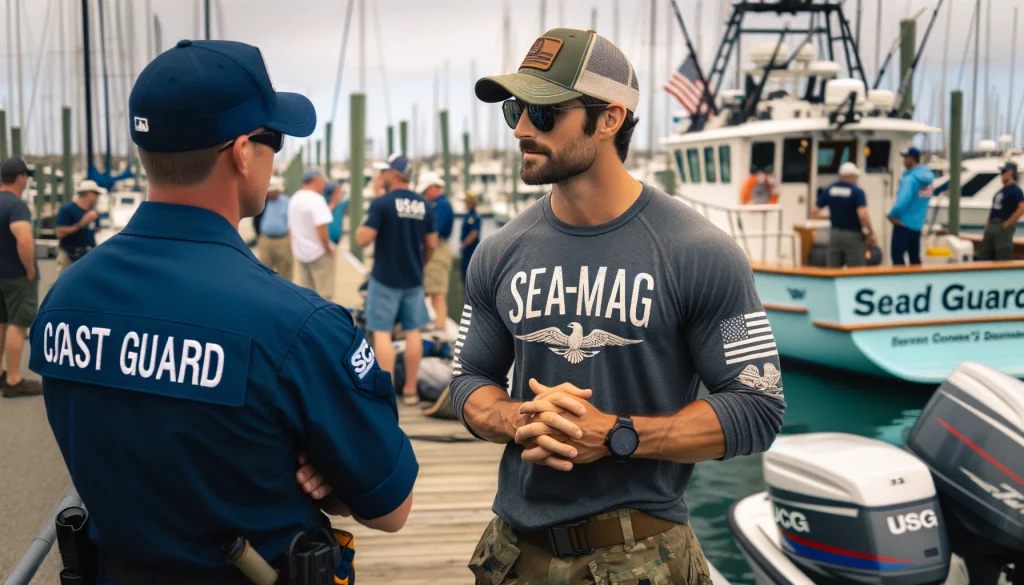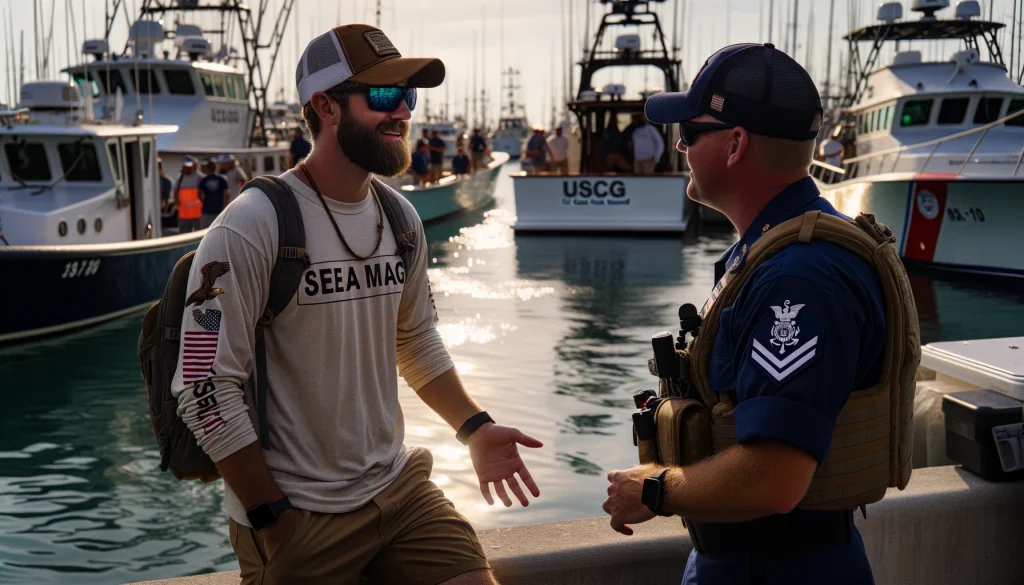You Are Caught in a Severe Storm in Your Boat: What Should You Do for Survival?
Boating is an enjoyable activity for many people, but it can become dangerous when unexpected severe weather conditions take place. Even with advanced weather tracking, storms can still catch boaters off guard, and being caught in such situations can be stressful and risky. It is crucial for boaters to understand how to navigate and respond to severe storms to ensure the safety of everyone on board.

Understanding the threat of severe weather is a vital aspect of boating safety. Storms bring strong winds, heavy rainfall, and high waves that can impact the boat's stability and maneuverability. Preparation is key - knowing what steps to take before, during, and after a storm can make a huge difference in preserving the well-being of the passengers and minimizing damage to the boat.
Being prepared doesn't just entail having a safety plan – it also includes understanding marine warnings and signals issued by local authorities. By staying informed, boaters can make informed decisions when opting for safer routes and adapting their actions to the storm conditions.
Key Takeaways
- Understand the threat of severe weather and prepare accordingly
- Follow safety measures during the storm and navigate carefully
- Stay informed of marine warnings and signals for informed decision-making

Understanding the Threat of Severe Weather
Weather can be unpredictable, and when caught in a severe storm while on a boat, understanding the threat and taking precautionary measures are crucial. Recognizing storm warning signs is the first step to staying safe on the water.
Gale warnings, storm warnings, hurricane warnings, and special marine warnings can provide boaters with information on the severity of the storm. Thunderstorms are a common severe weather event that boaters may encounter, and they can be accompanied by high winds, dark clouds, and threatening vertically rising cumulonimbus clouds. It is essential to monitor weather forecasts and pay close attention to signs of an approaching storm.
During a thunderstorm, floating debris could pose a risk to the vessel and its passengers. Such debris can damage the hull, propellers, or any other vital parts of the boat. Being cautious and vigilant in these situations is crucial for safety. If the boat is equipped with a radar system, using it can help detect potential hazards and navigate away from them.
In addition to thunderstorms, tropical storms and hurricanes also pose a significant threat to boaters. A tropical storm warning often precedes a hurricane warning and indicates the potential for high winds and heavy rainfall. Precautionary measures such as securing the boat, ensuring navigation lights are functional, and informing nearby vessels of the storm's location are necessary.
When encountering storm clouds, boaters should note their appearance and behavior. Dark, vertically rising clouds could signal the onset of a severe storm. Conversely, the presence of threatening clouds does not always guarantee a storm, but it should prompt boaters to monitor their environment closely.
In conclusion, understanding the various aspects of severe weather, including storm warnings and cloud formations, is essential for maintaining safety while boating. Being prepared and vigilant during a storm will help ensure a smoother and safer boating experience, even in the face of Mother Nature's unpredictability.

Preparation Before the Storm
Storms can be dangerous for boaters, so it is crucial to prepare your boat and crew before venturing out on the water. This section will discuss two important aspects of preparation: checking the weather forecast and equipping your boat with proper safety gear.
Checking the Weather Forecast
Before embarking on your boating adventure, always check the marine weather forecast for any potential storms or other severe weather conditions. Be aware of changing weather patterns and stay updated with the latest forecasts through your VHF radio. In addition to monitoring the forecast, you can also observe the clouds, wind direction, and pressure changes to predict storms. Remember, even the most experienced boaters should avoid severe storms whenever possible to ensure their safety.
Proper Equipment and Safety Gears
Having proper equipment and safety gear on board is essential for boating safety. Here is a list of items you should have on your boat to be prepared for severe weather:
- Life jackets and life preservers: Ensure that you have enough life jackets for all passengers on board and make sure they are easily accessible.
- Navigation lights: Turn on your navigation lights during a storm to increase your boat's visibility to other vessels.
- VHF radio: A VHF radio enables you to receive weather updates and communicate with other boats and the coast guard.
- Anchor: In case you get caught in a storm and are unable to reach the shore, have an appropriate anchor that can be quickly deployed.
- Secure doors, windows, hatches, and ports: Secure all openings and inspect for any leaks to prevent water from entering the boat during a storm.
- Electronics Disconnect all electronic equipment if there is lightning to protect them from damage.
- First aid kits: Keep a well-stocked first aid kit on board in case of injuries sustained during the storm.
- Harnesses and foul-weather gear: Equip all passengers with harnesses and foul-weather gear (such as waterproof jackets and pants) to provide protection during rough conditions.
- Bailers, signaling devices, and life rafts: Always carry bailers, signaling devices (flare guns, air horns), and life rafts for emergency situations.
- Emergency equipment and supplies: Keep extra emergency supplies such as flashlights, batteries, and food on board in case you are caught in a storm for an extended period.
By taking these precautions, you can improve your boating safety and be better prepared to face severe weather conditions.

Safety Measures During the Storm
Avoiding Lightning Strikes
During a severe storm, lightning poses a significant risk to boaters. To minimize the chances of a lightning strike, it is essential to take some precautions. Disconnect all electrical equipment on the boat to prevent damage due to a power surge caused by lightning. While it is impossible to guarantee complete protection from lightning strikes, installing a lightning grounding protection system can help to reduce potential damage and increase the likelihood of dissipating the lightning strike energy into the water.
When caught in a storm with lightning, keeping clear of metal objects is crucial, as they can conduct electrical current and increase the likelihood of injury. If possible, go below deck or into an enclosed space to reduce exposure to the elements and potential lightning strikes. Wearing rubber gloves can provide additional insulation, and removing jewelry can help minimize the chances of injuries from electrical discharge.
Securing the Boat
To ensure the safety of both the boat and its passengers, it is necessary to secure the boat during a storm. Begin by stowing any unnecessary gear and making sure the deck is free of objects that could become potential hazards. Turn on your boat's navigation lights to increase visibility to others and help avoid collisions. If possible, reduce speed and head your vessel into the wind at a 45-degree angle to reduce stress on the boat and maintain better control, as suggested by Dockwa.
If you are caught in a severe storm and unable to head to shore, consider dropping anchor to stabilize the boat. Make sure to line up your boat facing into the waves, and drop the anchor from the bow, as indicated by Nationwide. This can help to prevent the waves from swamping your vessel. Continuously monitor the bilge and be prepared to remove water by bailing if necessary.
By taking these measures to avoid lightning strikes and secure your boat during a storm, you can increase the safety and well-being of everyone on board.

Navigating Through the Storm
When caught in a severe storm, it's essential to remain calm and take the necessary precautions to ensure both the safety of the boat and its passengers. One of the first steps to take is determining the wind direction, as this will help guide the course to follow. Evaluate the wind and waves to maintain better control of the boat.
Turn on the boat's navigation lights to make the vessel visible to others and reduce the risk of collision. As visibility might be limited during a storm, it's crucial to maintain a steady and cautious course, constantly checking for any obstacles, floating debris, and other boats in the vicinity.
Steering the boat plays a significant role in navigating a storm. To avoid getting swamped by waves, steer the boat at a 45-degree angle towards the waves. This approach will also help to maintain better control and minimize the potential for accidents.
Maintaining an appropriate headway speed is essential during a storm to avoid broaching or losing control due to strong tides. To achieve this, slow down gradually and adjust the speed according to the intensity of the wind and waves.
It's vital to be familiar with the route, as well as the nearby channels and possible safe anchorage spots, to take the most appropriate course under the circumstances. Monitor the boat's set and drift to keep track of its position and anticipate any changes required in the navigation plan.
In case of decreased maneuverability due to a damaged or malfunctioning propeller, make necessary adjustments to steer and control the vessel. Keep a sharp eye on the boat's systems and instruments to ensure everything is functioning correctly.
By adhering to these guidelines and remaining vigilant throughout the storm, boaters can confidently and safely navigate their vessels during challenging conditions.

Post-Storm Procedures
Assessing the Situation
After the storm has passed, it is crucial for boaters to assess the situation on their boat and its surroundings. Begin by checking for any damages to the boat's structure, such as broken windows, doors, ports, and hatches. Inspect the propeller, steering wheels, and railing to ensure they are still functional and secure. If the cabins have been flooded, use bailers and engage the bilge pump to remove the water1.
During this time, it is essential for boaters to ensure the safety of all passengers on board. Make sure everyone has their life jackets on and double-check if there are any injuries that need immediate attention. Tune in to NOAA broadcasts from the National Oceanic and Atmospheric Administration to stay informed about any ongoing or upcoming weather threats2.
Reaching a Safe Place
Once the situation has been assessed, it is time to reach a safe place. Close any open windows, doors, ports, and hatches to prevent water from entering the boat. Slow down the boat's speed while maintaining control and steering3. If possible, use canvas or other materials to cover damaged areas, providing temporary protection from rain and wind4.
As the boat makes its way to safety, be mindful of the surrounding waters. Watch out for debris in the water, and if available, rely on nautical charts to navigate around potential underwater hazards5. Remember to maintain a stable boat by reducing speed, adjusting the trim, and keeping passengers evenly distributed along the boat's length6.
Throughout the process, remain calm and focused. By following these post-storm procedures, boaters can ensure the safety and well-being of their passengers while minimizing any further damage to their boat.

Potential Dangers and How to Avoid Them
When caught in a severe storm while boating, there are numerous potential dangers to be aware of. Knowing how to respond to these hazards can significantly improve safety and reduce the risk of injury or damage.
Falling overboard is a prominent risk during a storm, as the movements from large waves can easily knock passengers off balance. To minimize this risk, ensure everyone on board is wearing a life jacket and maintain a firm grip on handrails or other secure points on the boat.
Injury can occur from loose gear, fishing rods, and other unsecured objects on the boat. Be sure to stow away and fasten all gear properly before venturing out, and check periodically to confirm everything remains secure during the storm.
Fire is another potential danger, particularly if there is lightning during the storm. As a precaution, disconnect all electrical equipment and avoid standing near metal objects on the boat, which can attract lightning.
Obstructions may be challenging to see during heavy rain and high winds. Maintain a reduced speed, turn on navigation lights, and use radar systems if possible to remain aware of other boats, debris, and floating obstacles.
Broaching, a common problem during storms, occurs when a boat loses stability due to high waves or strong wind. To avoid broaching, drive slowly and ensure the boat remains properly balanced as you navigate the stormy waters.
Navigating through large waves is crucial during a storm. Steer the boat into waves at a 45-degree angle to reduce stress on the boat and maintain better control, as suggested by Jet Dock.
Should the storm worsen, consider finding shelter at a marina nearby. If your boat is on a trailer, secure the boat and park in a safe location away from potential flooding.
By taking these precautions and staying vigilant, boaters can successfully minimize the risks associated with severe storms and ensure the safety of all passengers and the vessel itself.

Understanding Marine Warnings and Signals
The National Oceanic and Atmospheric Administration (NOAA) provides crucial information to help mariners stay safe in case of severe weather events. Understanding marine warnings and signals is essential for everyone on the water to prevent accidents and ensure a safe journey.
Marine warnings are issued when hazardous weather conditions pose an immediate threat to boaters in the affected area. These warnings, such as hurricanes and other strong storms, require boaters to take immediate precautionary actions. Marine Watch alerts are issued when conditions are favorable for a specific hazardous weather event, but the timing or intensity remains uncertain. In this situation, boaters are advised to be prepared and stay informed on the latest forecast updates.
One of the essential alerts issued by NOAA is the Small Craft Advisory. This advisory is intended for smaller vessels that are more susceptible to the effects of adverse weather conditions. When a Small Craft Advisory is announced, operators of small boats should avoid venturing out to sea or seek shelter to ensure safety.
Besides warnings and watches, mariners need to be familiar with marine weather signals commonly used to communicate information on weather hazards. These signals, shown in the form of flags, lights, or sounds, help to inform boaters about impending or ongoing weather events.
Consider including the following marine signals in your knowledge base:
- Hurricane Warning Signal: This signal indicates that a hurricane is expected within the next 36 hours. It is essential to take immediate action to protect yourself and your boat when you see this signal.
- Gale Warning Signal: A gale warning is issued when strong winds of 34 to 47 knots are expected within the next 24 hours. Boaters must take necessary precautions and avoid sailing during this time.
- Storm Warning Signal: A storm warning suggests that violent weather conditions, including winds of 48 knots or higher, are expected within the next 24 hours. Boaters should avoid sailing and take necessary measures to protect their boat.
Being aware of NOAA's marine warnings and signals is crucial for a safe boating experience. Always keep an eye on the latest weather forecasts and monitor marine channels for updates before and during your trip. Remember, staying informed and prepared can help you make the right decisions in case of a severe storm and ensure the safety of yourself and your passengers.

Frequently Asked Questions
What is the best course of action if a thunderstorm approaches?
If a thunderstorm approaches while you are on a boat, it's essential to take precautionary measures. First, make sure all passengers are wearing life jackets. Then, stow any unnecessary gear, and turn on your boat's navigation lights 1. If your boat has a cabin, take shelter inside, making sure all windows and doors are closed 5. Disconnect all electrical equipment, and avoid touching metal objects, as lightning can be a hazard 1. If possible, move towards the shore or drop the anchor and face the waves 3.
How can a pre-departure checklist help in emergency situations?
A pre-departure checklist helps ensure you have all necessary safety equipment and precautions in place before leaving the dock. This includes checking the weather forecast, verifying the functionality of your boat's communication and signaling devices, ensuring life jackets are available for all passengers, and preparing an emergency kit with first aid items and navigational tools. In case of severe weather or an emergency situation, a well-prepared checklist can make a vital difference in the safety and well-being of everyone on board.
How should you navigate around fishing boats during a storm?
During a storm, it's crucial to drive your boat slowly to avoid broaching and destabilizing 2. Maintain a safe distance from other vessels, including fishing boats, and practice situational awareness. Monitor your radio and navigational systems while keeping a lookout for any obstacles. Be prepared to adjust your course as necessary to avoid collisions and ensure the safety of everyone involved.
What precautions should be taken when in cold water during a storm?
If caught in a storm while in cold water, taking proper precautions can help protect you from hypothermia and other potential hazards. Dress in layers of thermal clothing and wear a waterproof outer layer to help maintain body heat. Make sure all passengers are wearing life jackets, as this not only provides buoyancy but also helps conserve body heat. Monitor the water temperature and watch for signs of hypothermia, including violent shivering, confusion, and impaired consciousness. Seek shelter and medical assistance if necessary.
Is it safe to stay on a boat during a tornado?
It is generally not safe to stay on a boat during a tornado. When severe weather arises, such as tornadoes, it's crucial to seek shelter on land as quickly and safely as possible. If you're unable to reach shore in time, anchor the boat and find the most protected area possible, such as a cabin 5. Keep a low profile and protect your head and body from flying debris. After the storm has passed, assess the situation and communicate with local authorities for further instructions.

How should you share waterways responsibly with others during severe weather?
Responsibly sharing waterways during severe weather involves putting your safety and that of others first. Keep a safe distance from other boats and respect the right of way. Communicate using proper marine radio channels, and be prepared to offer or request assistance as needed. If you observe another boat in distress, follow your jurisdiction's maritime regulations on providing aid. Plan your route carefully, allowing ample time to address potential hazards and respect the needs of others on the water.
Footnotes
- Severe Weather: Prepare Your Boat and Passengers ↩
- Boat Caught in Severe Weather: What to Do - Nationwide ↩
- Boating Safety: What to Do if You're Caught in a Storm ↩
- If You Are Caught In A Storm In Your Boat, What Should You Do? ↩
- 6 Tips for When Your Boat's in Rough Seas ↩
- Severe Weather: Prepare Your Boat and Passengers ↩
Charlie is Editor-in-Chief of Sea Magazine